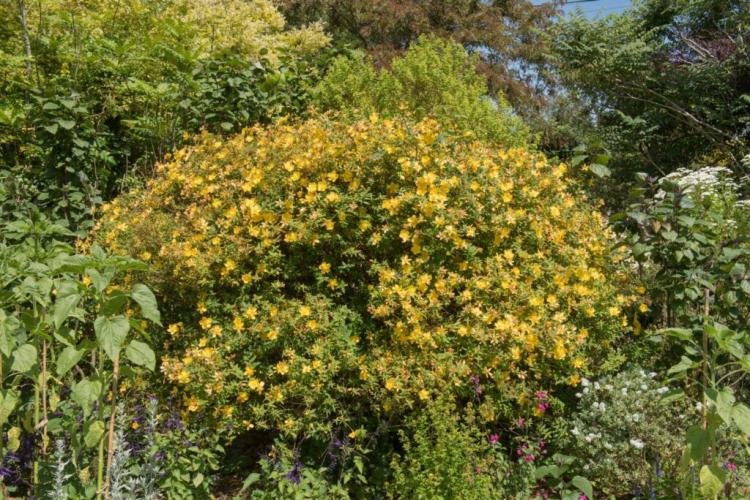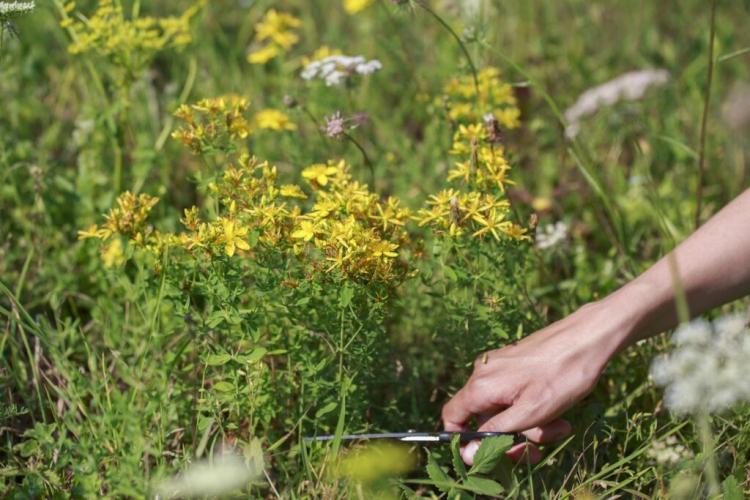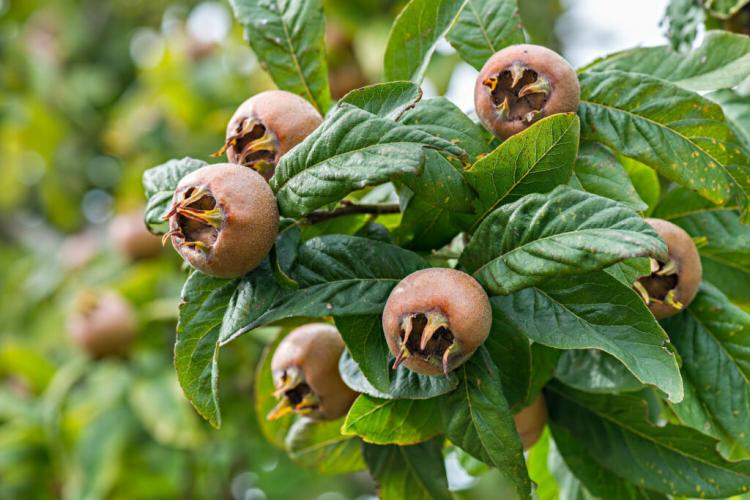St. John’s Wort: Location, Cutting And Use As a Medicinal Plant
St. John’s herbs ( Hypericum ) are popular perennial shrubs that can be found in many home gardens. We introduce the ancient medicinal plant and give tips on cultivation, care, and use.
St. John’s wort is a widely known garden and medicinal plant. We give you an overview of the properties, requirements and cultivation measures for the successful cultivation of St. John’s wort.
St. John’s wort: origin and properties
Table of Contents
In the genus St. John’s wort ( Hypericum ) there are 500 to 700 species that are distributed worldwide. They are part of the St. John’s wort family (Hypericaceae). There are several types of St. John’s wort indigenous to our latitudes, the best known is certainly St. John’s wort ( Hypericum perforatum ). In history, St. John’s wort has also accompanied Christianity from the very beginning.
The name is derived from John the Baptist, whose blood is said to have flowed into the flowers of St. John’s wort after he was beheaded. If you rub the yellow petals between your fingers, reddish sap emerges. This is why St. John’s wort is also called St. John’s blood in some places. It used to be called a royal crown or hard hay because of its golden yellow flowers, as the plant quickly becomes lignified and leaves hard stems behind.
St. John’s wort is a perennial shrub that, depending on the species, is evergreen or dies above ground in autumn and sprouts fresh in spring. The plant reaches an average height of 60 to 80 cm, but there are also low-growing, ground-covering species and significantly larger ones up to 150 cm. St. John’s wort usually forms several branched stems that can be round, angular, or winged and are green to reddish-brown in color.
The opposite, oval to lanceolate blue-green to green leaves of St. John’s wort often have many transparent or dark points. These are oil glands. The golden yellow, five-fold petals can also appear perforated, this is particularly noticeable with the spotted St. John’s wort ( Hypericum maculatum ).
Bees and other pollinating insects like to visit the golden yellow to light yellow flowers, as they provide food in midsummer until autumn. The flowers also have numerous stamens that protrude as thin threads from the center and willing pollinators charge their pollen. The flowering time of St. John’s wort usually begins around St. John’s Day in June and can last until October. After pollination, either greenish-brown, inconspicuous capsule fruits or red, orange, pink or white colored fleshy berries are formed.

Risk of confusion: A plant similar to St. John’s wort is the poisonous ragwort ( Senecio jacobaea ). However, if you take a closer look at the smaller flowers, you will find that they are structured very differently than St. John’s wort and that no stamens protrude. They look like a daisy – typical of Asteraceae. The leaves of the ragwort are alternate and pinnate.
Growing St. John’s wort: location and procedure
St. John’s wort has different demands on its planting location depending on the species, but is generally undemanding and tolerant of different locations. The ideal location for St. John’s wort is sunny to partial shade on humus-rich, well-drained soils. Some species prefer acidic, others calcareous, moist to dry soil. Details on the location requirements of individual St. John’s wort species can be found in our variety article.
You can buy St. John’s wort plants in perennial nurseries or grow them yourself by sowing them. These are light and cold germs. This means that the seeds initially need a long cold period. Then they should hardly be covered with earth, if at all, and receive plenty of light so that they germinate. The seeds can be pre-treated in the refrigerator for six weeks and then sown.
The elongated, red-brown seeds are placed on low-nutrient potting soil. The seeds are lightly pressed and only minimally covered with soil. The sowing container is set up in a bright but not sunny location at around 20 ° C and the soil is always kept well moist. The first seedlings appear after two to three weeks. Alternatively, sow the seeds outside in autumn and leave them in the cold. St. John’s wort has a high germination rate and therefore some seeds will certainly sprout in the following spring. The seedlings can be planted or moved after a few weeks.
The best time to plant hardy perennials is in late autumn between October and the end of November. Alternatively, it can be planted in early spring before the leaves shoot at the beginning of March. Since the perennials have not yet been able to form roots, they will have to be watered regularly in the coming summer. In the bed, St. John’s herbs can be planted in groups, as a dwarf form to cover the ground or as individual shrubs.
The planting distance is around 40 cm in groups, six to eight plants are placed on one square meter. Lower St. John’s wort species such as upholstered St. John’s wort ( Hypericum podophyllum ) are used to cover the ground and 12 to 15 pieces per square meter are used. Individual, larger shrubs such as the large-flowered St. John’s wort ( Hypericum x pabulum ) should be kept at a distance of 1.5 to 2 meters from other plants. Proceed as follows to plant the St. John’s wort:
- Loosen the soil at the future location, work in some ripe compost if necessary.
- Dig a sufficiently large and deep planting hole.
- Do not put the St. John’s wort plant any deeper than before, fill it up with excavated material and press lightly all around.
- Pour on vigorously.
St. John’s wort in a pot: St. John’s wort can be cultivated well as a pot plant. The pot volume should hold at least 5 liters. It is important to have good water drainage and an approximately 5 cm high drainage layer made of sand, gravel, or expanded clay. However, the pots should be given insulating winter protection when overwintering outdoors.

Summary: planting St. John’s wort
- Sowing: indoors with cold treatment or outdoors in autumn
- Location: sun to partial shade
- Soil: humic and well-drained; Depending on the type, sour or chalky, moist to dry
- Time: October to the end of November or from the beginning of March
- Plant spacing: 40 cm (in groups), 1.5 – 2 m (individually), 12 – 15 plants / m2 (ground cover)
Caring for St. John’s wort: cutting, pouring & Co.
St. John’s wort is an ornamental and medicinal plant that is easy to care for. It should be watered now and then, especially in the first year after planting and in dry, hot summers.
You should not fertilize the perennial too much, because a high nitrogen supply reduces the content of positive substances. An annual application of compost or mainly organic long-term fertilizer is sufficient for St. John’s wort to sprout.
In addition to the cut when the St. John’s wort is harvested, the perennial is also cut back in spring. With perennial St. John’s wort, all dead plant parts are removed before budding, the perennial can then grow fresh. In the case of evergreen plants and shrubs, frozen or old and injured shoots are removed in spring.
Propagate St. John’s wort
St. John’s wort can be propagated from seeds and cuttings. In autumn you can obtain the St. John’s wort seeds yourself. To do this, collect the capsule or berry fruits in October and let them dry gently for a few weeks at room temperature. The dry seeds fall out of the capsules, the berries have to be broken open to obtain the seeds. The seeds of St. John’s wort can be kept dry, cool, and dark for a few years without affecting their ability to germinate.
It is best to cut cuttings from the young, still unwooded shoot tips before flowering in May. These approximately 10 cm long pieces of shoot are defoliated up to the tip and put in potting soil that is poor in nutrients and half of which is enriched with sand. At around 20 ° C, kept light and moist, the first tender roots form after a few weeks. The cuttings can be planted out in autumn of the same year.
Tip: In the case of the shrubs that die annually in autumn – unlike the St. John’s wort shrubs, which do not die above ground – the rhizome can also be divided. For this purpose, a piece of the eyrie is cut off with a spade and moved in autumn.

Is St. John’s Wort hardy?
St. John’s wort is completely hardy in our latitudes. If you only cut back dead above-ground parts of the plant in spring, there is additional protection for the perennial. St. John’s wort in the pot should have insulating winter protection made of jute sacks, coniferous branches, or fleece.
Harvest and use St. John’s wort
Only the real St. John’s wort is important in pharmacy. When St. John’s wort is in bloom from June, the above-ground parts of the plant are collected. If you harvest St. John’s wort early in the morning, then the proportion of positive active ingredients such as hypericin is highest. You can cut off the whole plant or just the flowers and individual leaves. After harvesting the St. John’s wort, it should be used quickly to preserve the valuable ingredients.
You can use it to prepare tinctures or dry leaves and flowers for St. John’s wort tea. The plucked flowers are filled into a bottle with high-quality vegetable oil and stored in a sunny, warm place for about six weeks. The resulting red St. John’s wort oil can be used for several months.

Application of St. John’s Wort
Preparations or capsules made from St. John’s wort as well as extracts and also the red St. John’s wort oil are used for depressive moods, anxiety states, and nervousness. Applied externally as a care oil, St. John’s wort relieves muscle pain and skin irritation promotes wound healing and has an anti-inflammatory effect. However, the use of St. John’s wort should always be discussed with a doctor, as it can interact with certain medications. One of the side effects of St. John’s wort is the increased sensitivity to light due to the coloring hypericin. Fair-skinned people should therefore avoid sunbathing when taking St. John’s wort.
Is St. John’s Wort Poisonous?
St. John’s wort is classified as slightly toxic, mainly because of the skin’s sensitivity to light as a result of consumption. White grazing animals such as horses, sheep, or goats can suffer from hard hay disease after excessive consumption of St. John’s wort and sun exposure.

You might so like:






